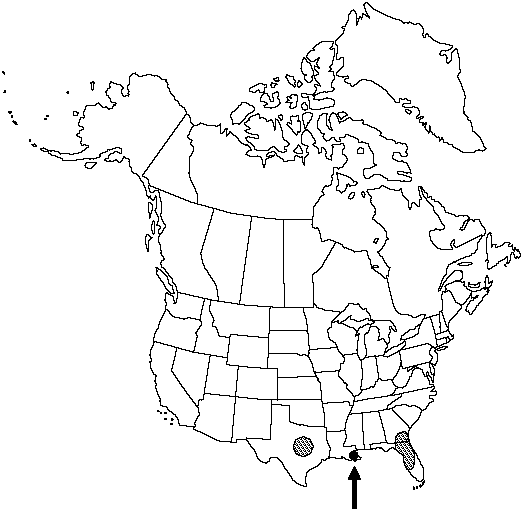Difference between revisions of "Blechnum occidentale var. minor"
Sp. Fil. 3: 51. 1860.
FNA>Volume Importer |
imported>Volume Importer |
||
| (5 intermediate revisions by 2 users not shown) | |||
| Line 8: | Line 8: | ||
}} | }} | ||
|common_names=Hammock fern;New World midsorus fern | |common_names=Hammock fern;New World midsorus fern | ||
| − | |basionyms={{Treatment/ID/ | + | |basionyms={{Treatment/ID/Basionym |
|name=Blechnum glandulosum | |name=Blechnum glandulosum | ||
|authority=forma pubirachis (Rosenstock) Lellinger | |authority=forma pubirachis (Rosenstock) Lellinger | ||
| + | |rank=species | ||
| + | |publication_title=in Link | ||
| + | |publication_place= | ||
}} | }} | ||
|synonyms={{Treatment/ID/Synonym | |synonyms={{Treatment/ID/Synonym | ||
|name=Blechnum occidentale | |name=Blechnum occidentale | ||
| − | |authority= | + | |authority= |
| + | |rank=species | ||
}} {{Treatment/ID/Synonym | }} {{Treatment/ID/Synonym | ||
|name=Blechnum occidentale var. pubirachis | |name=Blechnum occidentale var. pubirachis | ||
|authority=Rosenstock | |authority=Rosenstock | ||
| + | |rank=variety | ||
}} | }} | ||
|hierarchy=Blechnaceae;Blechnum;Blechnum occidentale;Blechnum occidentale var. minor | |hierarchy=Blechnaceae;Blechnum;Blechnum occidentale;Blechnum occidentale var. minor | ||
| Line 42: | Line 47: | ||
-->{{#Taxon: | -->{{#Taxon: | ||
name=Blechnum occidentale var. minor | name=Blechnum occidentale var. minor | ||
| − | |||
|authority=Hooker | |authority=Hooker | ||
|rank=variety | |rank=variety | ||
| Line 56: | Line 60: | ||
|publication year=1860 | |publication year=1860 | ||
|special status= | |special status= | ||
| − | |source xml=https:// | + | |source xml=https://bitbucket.org/aafc-mbb/fna-data-curation/src/2e0870ddd59836b60bcf96646a41e87ea5a5943a/coarse_grained_fna_xml/V2/V2_219.xml |
|genus=Blechnum | |genus=Blechnum | ||
|species=Blechnum occidentale | |species=Blechnum occidentale | ||
Latest revision as of 20:22, 5 November 2020
Stems slender, creeping, elongate, branched, ascending to erect at tip, not climbing. Leaves ± monomorphic, cespitose to widely spaced, erect to arching, fertile leaves only slightly contracted and longer than sterile leaves. Petiole straw-colored to light brown, (4-)8-34 cm, coarsely scaly proximally. Blade narrowly to broadly lanceolate, 1-pinnate proximally, becoming pinnatifid distally, or pinnatifid throughout, without conform terminal pinna, 10-30 × 3-12 cm, base truncate, pubescent abaxially. Rachis with indument of spreading, ± gland-tipped hairs abaxially. Pinnae not articulate to rachis, proximal pinnae sessile to subsessile, distal pinnae adnate; larger pinnae curved, lanceolate, 2-7 × 0.5-1.5 cm. Fertile pinnae slightly contracted; margins minutely serrulate to nearly entire; costae with indument of hairs abaxially. 2n = 124.
Habitat: Rocky and clayey places near seasonally dry streams, shady hammocks or open woods, over limestone, soil nearly neutral
Elevation: 0 m
Distribution

Fla., Ga., La., Tex., West Indies, Central America, South America to Bolivia.
Discussion
Blechnum occidentale var. minor differs from var. occidentale in having rachises slightly pubescent or puberulous abaxially. Both varieties are found throughout the New World tropics; B. occidentale var. minor grows at higher elevations (D. B. Lellinger 1985). The nomenclature of these taxa is complicated, and other names may apply. Systematic problems involving different ploidy levels and apparent geographic clines in Blechnum occidentale sensu lato remain to be solved.
Plants of Blechnum occidentale often reproduce extensively by stolons as well as by spores.
Selected References
None.